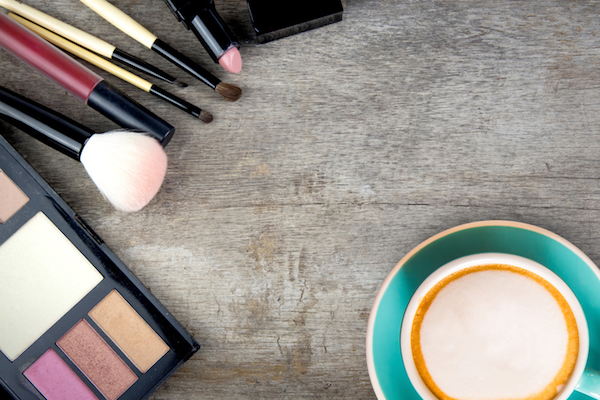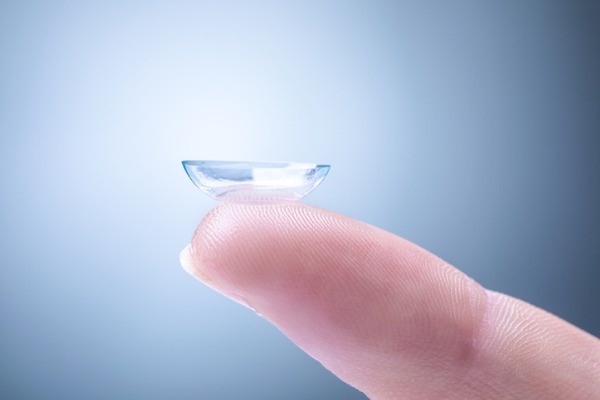
Eye-Focused Fashion Trends
Stay true to your personality when playing with makeup and enjoy the process of finding what works for you.
As I explained in my last post, the use of makeup is a time-tested way to enhance beauty. At the same time, it’s best to pay attention to detail when applying makeup because irritation and/or infections can sneak up without warning.
These days, it’s not hard to find a fashion expert who can hand out relevant beauty advice. I, for one, am no fashion expert, but I am pretty well-rounded when it comes to eye health. That said, it’s best for me to know a little something about everything related to the eyes. I like to think my advice holds weight, but I never take offense to useful suggestions.
The Color Wheel:
As a brown-eyed girl, I play by the rules of the Color Wheel. Sure, I’ve dabbled outside of my recommended color scheme, but the results were probably not so great. In all actuality, my big brown eyes don’t really pair well with bright blue shades of eye shadow. For those of you who can pull it off, congrats.
When sticking to the Color Wheel, first figure out your true eye color. There are several different shades of brown, blue, green, and hazel, but these four options are the main eye color categories. Once you understand your true color, the following rules apply:
- Brown eye color – includes shades of red and orange mixed with brown and pairs best with green, blue, copper, or violet makeup shades
- Blue eye color – includes different shades of blue and pairs best with peach, gold, bronze, and blue-green or blue-violet makeup shades
- Green eye color – includes different shades of green and pairs best with purple, green, or gold makeup
- Hazel eye color – includes shades of brown and gray mixed with green and pairs best with violet, green, or bronze makeup shades
Even when armed with technical information, it’s always best to stay true to your personality while playing with makeup. The main idea is to enjoy the process of finding the right look. If a different combination works better for you, then by all means, go with it.
Color Contacts:
Color contacts seem to go in and out of popularity. Nevertheless, they’ve been around for quite some time. In the last few years, two top contact lens manufacturers released new products touted as beauty enhancing contact lenses.
The first one is Air Optix Colors. These colored contacts come in soft lenses and are monthly disposables (of course you clean them every night). Air Optix come in the following color choices: blue, brilliant-blue, green, gemstone-green, gray, sterling-gray, honey, brown, and pure-hazel. As of right now, they aren’t made to correct an astigmatism (or a football shaped eye), but they do work well for cosmetic purposes.
In my opinion, the change in color from lens to lens is quite subtle (when using Air Optix). However, certain colored lenses work best with specific eye colors. For instance, blue lenses won’t do much to change a dark-brown eye color, but green or gray lenses work well with light-brown or hazel eye color. Furthermore, green or gemstone-green lenses go well with green eyes, and blue eyes appear more dramatic when wearing blue lenses. I’d say it’s best to try a few options before making a final decision.
Acuvue 1-Day Define lenses are another beauty enhancing contact lens. This particular option gained popularity in Asia prior to being released in the United States. The purpose of these lenses is to make your eyes pop without changing eye color. That said, Define lenses are actually clear in the center, but have a colored ring around the edge.
As of right now, Define lenses come in three main categories: Natural Shine, Natural Shimmer, and Natural Sparkle. In my opinion, brown eyes are best enhanced by Natural Shine. Green and hazel eyes are best enhanced by Natural Shimmer. And blue eyes work best with Natural Sparkle.
I should note that several of my 40 year-old (and over) female patients really enjoy Acuvue 1-Day Define lenses. This is because they give the eyes a healthier and more youthful appearance.
Latisse:
Lastly, it makes sense to mention a popular eyelash enhancing product called Latisse. Latisse is a prescription eye drop that is placed on a small brush applicator and directly applied to the root of the upper eyelash. It belongs to the drug class known as prostaglandins, which have hormone-like effects. That said, it’s best to use Latisse only once per day, preferably at night.
After about six to eight weeks of use, the eyelashes will appear noticeably longer and thicker. Once you stop using Latisse, its effects will wear off (after a couple weeks or so). Side effects of note are increased pigmentation of the eye area (or permanent darkening of the colored part of the eye). There can also be pigment changes of the skin where the medication is applied.
Further complications can include redness and/or irritation if the medication gets into your eye. You should not use Latisse if you’re pregnant, breast feeding, or an eye infection is present. Since Latisse is only available by prescription, it’s best to ask your eye doctor if you’re a good candidate for use.
In Conclusion:
If you’re thinking about making a change to your personal appearance, you should first gather as much information as possible (even if it’s only a subtle change). If you’re interested in colored contacts or Latisse, you should reach out to your eye doctor. However, more drastic changes shouldn’t be made on a whim. If you’re considering more than a subtle change, you should get advice from those who care about you the most. And always remember…
“Beauty begins the moment you decide to be yourself.”







